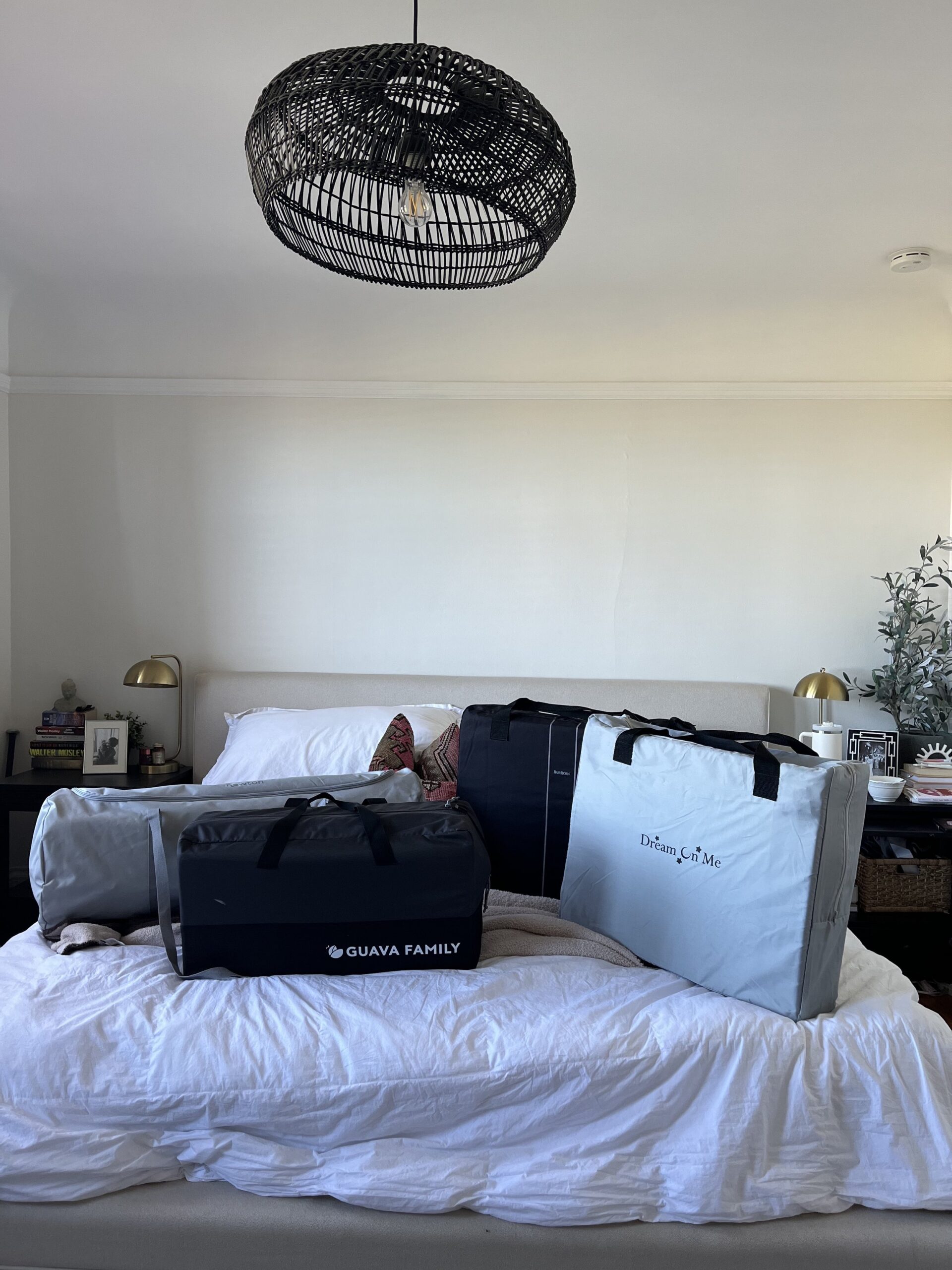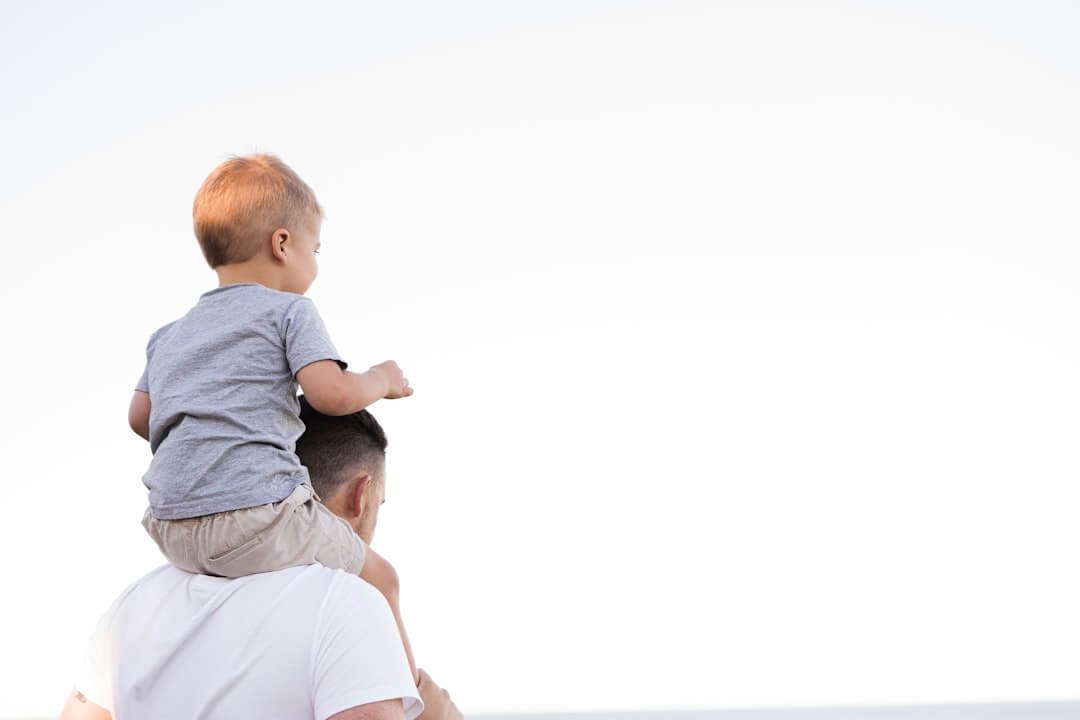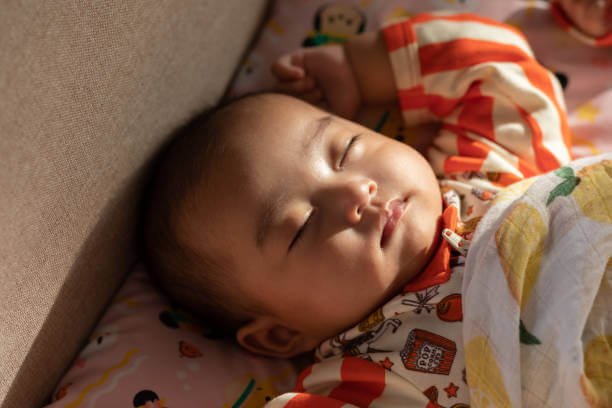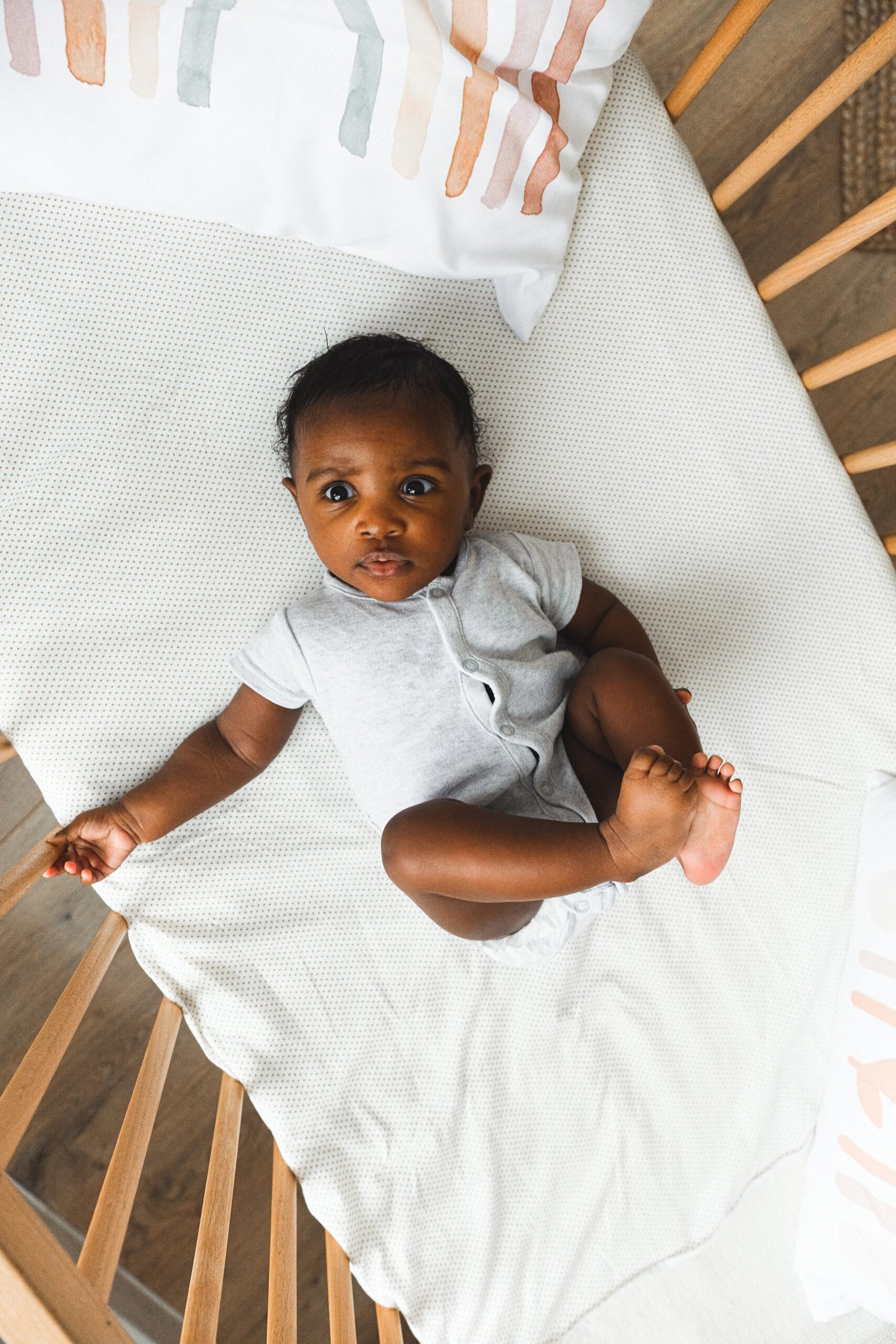I'm Rachael
Mom of 3 & Baby Sleep Expert with Big Sis Energy
& I’VE DONE ALL THE RESEARCH FOR YOU ALREADY.
Better sleep for the entire family
BROWSE COURSES
hey!
how to move from the crib to a toddler bed
August 28, 2024
in this post:
When is the best time to move from crib to bed?
The “best time” to transition from the crib to a bed depends on many factors, including your child’s age, stage of development and temperament. It also depends on your family and lifestyle, home set up, siblings etc. There is no one perfect time that works for everyone!
This is totally your call, but there are some things to keep in mind. If the crib is going WELL and your little one sleeps in the crib without a problem overall, it’s fine to keep this as their main sleep space for as long as they will fit, according to the height/weight limits set by your crib manufacturer. When you may want to switch:
-
Usually between 18 months and 3 years old years we can start to think about transitioning to a bed for the first time UNLESS your child outgrows the crib sooner
-
f they are otherwise unsafe in the crib, trying to climb or jump out, etc.
-
If you can see their chest above the rail of the crib when they are standing up, they may have outgrown their crib.
-
Typically, a child should switch to a bed when they are about 3 feet tall.
If your child has mostly bed shared throughout infancy or they do NOT sleep well in a crib, you may go right to a “floor bed” at any age, as long as you set it up safely.
-
37 percent of toddlers aged 18 to 22 months have transitioned from crib to bed.
-
66 percent of toddlers aged 24 to 29 months have transitioned from crib to bed.
-
87 percent of toddlers aged 30 to 36 months have transitioned from crib to bed.
Safety First
Once you decide to ditch the crib, safety proofing your child’s room is job number one. If you are opting for a “floor bed” style, for young babies it’s best to use a crib mattress as a floor bed, as they are tested for infants and typically the firmest option. After age 2 is when it’s considered to be safest for them to sleep on a regular twin or full sized mattress (though you still want a firm option here!).
You might also consider a convertible crib, which is a piece of furniture that can act as either a crib or a toddler bed. We did this with my oldest and it was a breeze to go from crib to bed with him- he never even tried to get out of it! With these, you can remove one side of the crib, giving your child the freedom to get in and out of bed on their own, without losing the comfort and familiarity of the crib. Eventually you can remove all the sides or just go to a regular bed once they’ve grown out of the crib size mattress.
If you’re going for a traditional toddler bed, you want to be sure it’s still fairly low to the ground in case they fall out. You can use something like a guard rail or bumper if you’re worried about this, but these items are only safe for children over age 2.
Keep the bed away from the wall for toddlers under 2 to avoid risk of entrapment. Whatever bed you choose, it is best to purchase your mattress and frame at the same time to ensure they fit snugly together.
Since your child will now have freedom in the room, you also need to safety proof if you haven’t already. Blind cords, electrical cords and outlets etc. should all be out of reach and/or covered. Furniture should be anchored to the walls (dressers, book shelves etc.). Small toys (marbles etc.) should be out of reach. Most kids will not be waking up in the middle of the night and playing, but all of these things are important for those “just in case” scenarios!
It’s never recommended to lock your child in their bedroom. Doors should be closed, not locked, for fire safety. If you are concerned about them leaving their room, you can install a gate at the door or at other doorways/ hallways etc. so that they are more contained. You can also install alarms that will alert you if their door is opened. Windows should always be locked and you may decide to have alarms on those as well.
What about blankets and pillows?
For toddlers over age 2 you can use a pillow on their bed. For babies using a floor bed, you can offer a “lovey” or small blanket after 12 months old at minimum. Sleep sacks are a great option for warmth, and if they’re in a bed you can use the feet-out type so they don’t trip if they get up to walk.
You may want to use a zip-up style for bedding if your child is constantly kicking their covers off. We love Beddy’s and have used them for years because it avoids this problem plus makes it super easy for the kids to “make” their beds and have it look pretty clean and neat. You can use my code SLEEPYBABY for 15% off.
If you prefer standard blankets, those are fine too! Just be sure not to offer blankets to infants under one year, and never use a weighted blanket, sleep sack or swaddle for your child.
Getting your child used to their new bed
Once you’ve set up the space for safety you’ll need to prep your child for the transition to a toddler bed. For older kids, you can use things like social stories, pictures, etc. I like these books for talking about sleeping in a new “big kid” bed.
You may want to practice using the new bed at nap time so your child can get used to it before they spend a full night in the bigger bed.
You can also try role playing, so that your child can practice going to bed during the day, tucking their stuffies in, or putting YOU to bed. Making it fun and silly while practicing can help them process and get their buy-in.
You may decide to try out the new sleep space for just naps first if your child still cosleeps at night, but if you’re going for it all at once, you may just want to prepare yourself for bedtime to take longer than usual. This is normal, and it’s just because they’re excited about something new. If you can keep your cool and be patient, this will pass and bedtime will go back to normal soon.
Prep tip Show your child their new space during the day vs. springing it on them right before bed. You want to be sure they have time to check it out, jump on it, etc. (because they WILL want to!) and you want that to happen during the day vs. down to the wire at bedtime.
Prep tip Get your child involved in the process of choosing their new bedding, sheets, a special stuffy etc. to help get them excited about their new sleep space.
You should try and keep your bedtime routine as close to normal as possible. You CAN, though, introduce a new piece to the routine if your child is apprehensive about the new bed. If they are old enough for extras in their sleep space (lovies, dolls, blankets etc.) you can introduce a “tucking in” ritual with their stuffies. They get to put each stuffy or doll into place, tuck them in, say goodnight to each one etc. Then it’s their turn!
You may lay with your child as they fall asleep now that they are in a bed vs. a crib. You can rub their back, tell them a story etc. If they are still used to rocking or doing something else to fall asleep, that’s also OK! You can continue to transfer them to their bed asleep if that’s what is working for you.
still having issues?
One thing lots of parents struggle with is kids getting up and getting out of their beds. This wasn’t possible with a crib! With a new bed can come a new sense of independence and some kids just need a little more help staying in their beds. A few things you can do to help:
-
Adjust your mindset so you expect this to happen, and know you’re ready for it! Anticipate your child leaving the room and to preempt it with closeness. It’s easier to stay with them and/or do short separations at first than to repair their sense of panic or urgency if you are abruptly leaving, threatening to leave, etc. You want to be very nonchalant about this, and avoid turning it into a power struggle or fight. Make your child believe that you have all the time in the world for them!
-
Stay with them until they are asleep. There’s no harm in laying with your child or supporting them to sleep- just because they’re in a “big kid” bed they are still little, after all!
-
Sometimes it’s not possible to stay with them while they fall asleep. I get it, and you can work on falling asleep independently. One great way to do this is to lay with them until they are almost asleep, say you need to go to the bathroom, and come RIGHT back. This is building their tolerance for very short partings. Over time you may do this a few times (like with popping out) or for a full minute (minute alone) and eventually you’ll be able to leave while they are still awake.
-
Be consistent. Try to do the same thing every time this happens. If they leave the room and come to yours, either allow them to cosleep, set up a little space for them to sleep beside you, or escort them back to their own bed. Try and respond the same way each time.
I don’t ever recommend locking your child in their room, even though they were contained in their crib. There are other things you can do to ensure they are safe now that they are in a bed, such as installing door alarms and window locks, using gates, etc.
You may need to reconsider the transition if your little one just doesn’t seem ready. Of course some pushback and setbacks are very normal in the first couple of weeks with any big change, but you know your child best! If they are really struggling and things feel like they are getting worse, dont’ be afraid to bring back the crib. You may then just wait until your child is either jumping out, requesting to be moved, or are nighttime potty-trained.
There are lots of reasons little ones may struggle with this change or with bedtime in general. For more guidance, check out the following options:
-
for babies under 18 months, try the Ultimate Crib + Floor Bed guide. This is the perfect guide for young babies and toddlers who are need some help starting or adjusting to sleep in a crib or on a floor bed.
-
For toddlers and bigger kids, check out the Tender Transitions course. In this course you’ll learn all about how to move away from certain sleep associations that aren’t working for you anymore, like bouncing, rocking, or nursing to sleep. You’ll also learn how to stop cosleeping or bed sharing.
-
Also for toddlers and big kids, the Better Bedtimes Guide has everything you need if you’re looking to end bedtime battles, stalling, negotiations and bribes. The Bedtimes Guide will teach you how to identify WHY going to bed is so hard for your child and give you lots of evidence-based strategies to try so that bedtime can be QUICK and enjoyable for all!
-
Best Deal: The Toddler Bundle includes the Tender Transitions Course AND Better Bedtimes, plus comes with a BONUS GUIDE for Welcoming a New Baby Sibling.
Featured
Choosing the right time to leave your baby is a super personal choice. Some babies and moms feel comfortable at a much earlier stage than others and finding the right time for you is important. These are my tips for prepping to leave your baby overnight.
Travel crib and play yards can provide a safe and comfy space for your little one to hang out or sleep. But which travel crib is best? In this blog post, Rachael reviews 6 different popular play yards and compares each one based on different criteria…
binge reads
We think you'll love these
You deserve to the
baby stage, not just "survive it."
And you DON'T have to sacrifice your values, ignore your instincts, or force yourself to follow a method you don't align with just to get your baby back to sleep.
I’m here to help you create a restful, sustainable sleep environment that honors both your baby’s needs AND your own (without the stress OR the guilt!) because, no, you don’t have to choose between the two.
enjoy!
BABY SLEEP COURSES →
BABY SLEEP CONSULTS →
Wish you could help your baby sleep better without resorting to sleep training? Download my FREE guide to a good night’s sleep and learn 8 simple, science-backed tips for supporting your child’s needs.
Traditional sleep training methods don’t have to be your solution to better sleep.
SLEEP TRAINING ISN’T THE ONLY WAY TO GET GOOD SLEEP
Hey, I'm Rachael and Hey, Sleepy Baby is for parents who want to get their nights back, without sleep training their babies.
NO ONE TOLD US POD
explorING the untold truths of parenting





